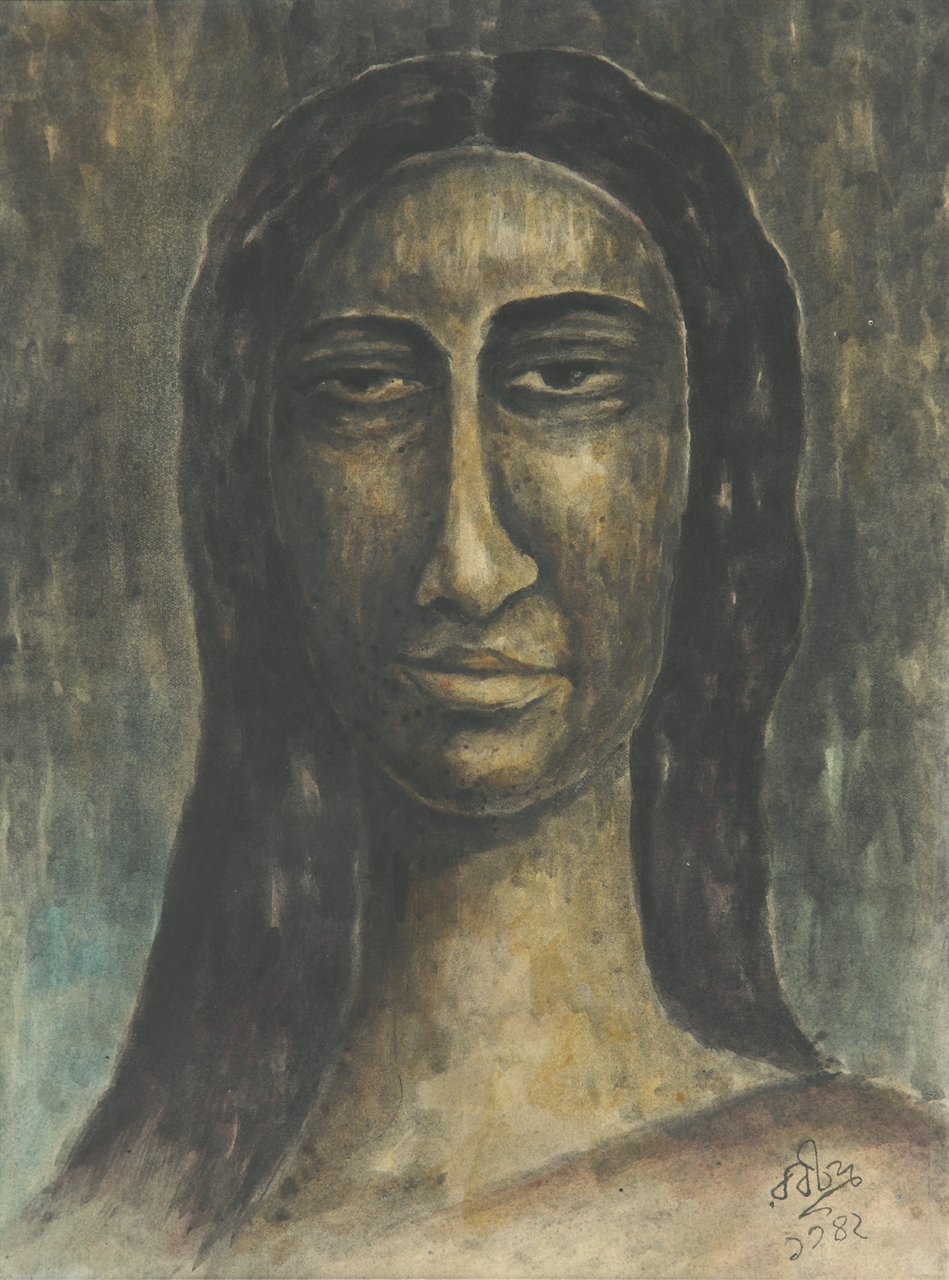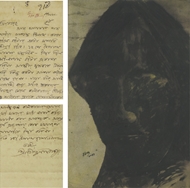![]() Significant Indian Paintings
Significant Indian Paintings
![]() Significant Indian Paintings
RABINDRANATH TAGORE (1861 - 1941)
Significant Indian Paintings
RABINDRANATH TAGORE (1861 - 1941)
RELATED LOTS
CONTACT US
Catalogue & Viewing
Lot Closed
Accounts & Shipping
Lot Closed
-
Provenance
 Provenance
Provenance
From the collection of a prominent Kolkata based gentleman, who has owned it since the early 1960s
-
Literature
 Literature
Literature

“It may be asked why the World Poet, in the evening of his life, has almost forsaken his masterly pen to wield the brush. The reply is not far to seek. What appears to not an inconsiderable number of critics as the effeminate characteristics, which mar the beauty of New Bengal School of Art, has not escaped the notice of such a keen observer as our Poet. On the other hand, in Rabindranath’s opinion, it is idle in these days to make efforts to revive anything approaching the sublime grandeur of the Ajanta School. The Poet-Painter makes an entirely new departure in representing the reality of life with his own vigorous masterstrokes, which know no faltering. In his seventieth year, the poet’s fingers are tense, and show no tremulousness. His pen and ink pictures are veritable masterpieces. The figures drawn by the poet with a single stroke of the brush vividly bring out the vitality of the inspired art of Rabindranath. His paintings have in them great movements. His portraits are the very embodiments of vitality of expression....” – Mukul Dey (catalogue foreword to the 1932 exhibition of Rabindranath Tagore’s paintings held at 28, Chowringhee Road, Calcutta).
Tagore’s career as a painter prominently dates from around 1928 though he is known to have drawn sketches throughout his career. His early paintings were rendered in monochromatic schemes, followed by two-toned and three-toned drawings. Using a metal-nibbed pen the artist outlined the form and then filled it in with hatched textures which gave the paper surface a shimmering effect depending upon the light. Other than a pen, the artist used his fingers, bits of cotton-wool and rag to daub, smudge and rub the coloured waterproof inks to create tones of great depth and intensity. The condition of his colour blindness, known as protanopia, resulted in an inability to distinguishing between the colours red and green. Perhaps this explains the stranges of his colour palette.
Unlike the evident playfulness of his zoomorphic forms, Tagore’s portraits, especially those of women, are laid out with a studied assiduousness. The poignant expressionism of their unwavering gaze exert a mesmeric appeal that intensifies an underlying sense of mysticism. A subject close to the poet’s inner psyche, it explains their continued recurrence in his paintings and literary pieces. The poets deep understanding of the feminine mind was initiated by his close association with sister-in-law Kadambari Devi and wife Mrinalini Devi, all of whom he lost to the cruel fate of untimely death, including his own mother. He is believed to have painted most of the feminine portraits in their fond remembrance.
The first exhibition of Tagore’s painting took place in May 2, 1930 at Gallerie Pigalle in Paris. History chronicles this event as a chance discovery of a genius by a French journalist at an obscure country-house in the south of France. This was followed by several other successful exhibitions all over Europe where his works were handsomely praised by eminent artists and intellectuals alike.
-
Notes
 Notes
Notes

National Art Treasure / Non Exportable


